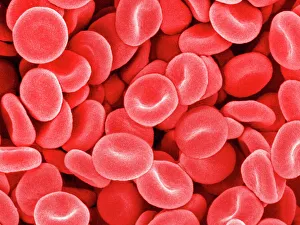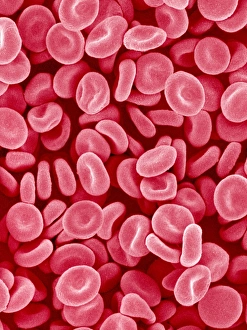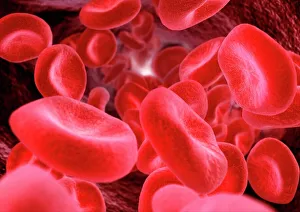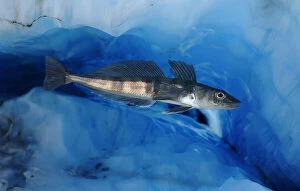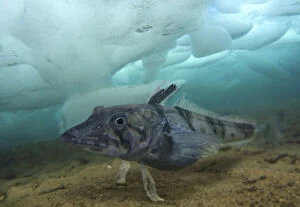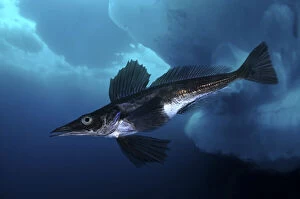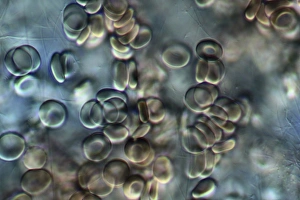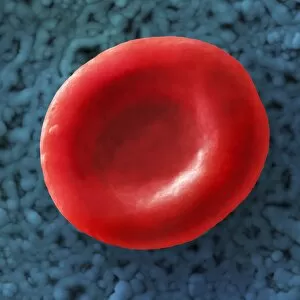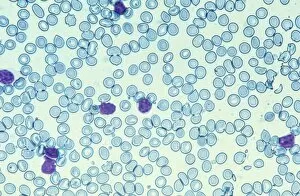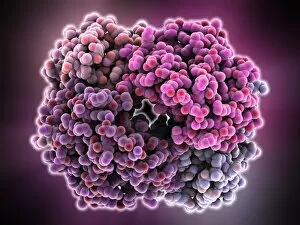Haemoglobin Collection
Haemoglobin: The Oxygen Transporter of Red Blood Cells In the microscopic world of red blood cells, haemoglobin reigns supreme
All Professionally Made to Order for Quick Shipping
Haemoglobin: The Oxygen Transporter of Red Blood Cells In the microscopic world of red blood cells, haemoglobin reigns supreme. Seen through a scanning electron microscope (SEM), these tiny cells appear as intricate masterpieces, intricately designed to carry life-sustaining oxygen throughout our bodies. But not all creatures rely on this remarkable protein. Take the Antarctic icefish family, known as Channichthyidae, for example. These unique fish species have evolved an extraordinary adaptation - they do not use haemoglobin to transport oxygen like other vertebrates do. Swimming gracefully under the icy waters, mackerel icefish and blackfin icefish defy convention by relying on alternative mechanisms for survival. Computer artwork captures their ethereal beauty as they navigate their frozen habitat with ease. Resting peacefully on the seabed beneath a layer of ice is the ocellated icefish. Its lack of reliance on haemoglobin sets it apart from its fellow vertebrates, showcasing nature's ability to adapt and thrive in even the harshest environments. Jonah's icefish joins its counterparts in defying expectations by swimming effortlessly beneath the icy surface. This member of Channichthyidae demonstrates that innovation knows no bounds when it comes to evolution's creative solutions. With mouths wide open, mackerel icefish boldly display their unconventional approach to oxygen transportation. Unlike other vertebrates who depend on haemoglobin within their red blood cells, these fearless swimmers embrace a different strategy altogether. Chaenocephalus aceratus glides close to the seabed while swimming under thick layers of ice. As part of Channichthyidae family members who shun traditional methods, this blackfin icefish showcases how nature can rewrite its own rules for survival. From SEM images capturing red blood cells' intricate details to computer artwork depicting mesmerizing underwater scenes filled with non-haemoglobin reliant fish, the world of a fascinating one.

